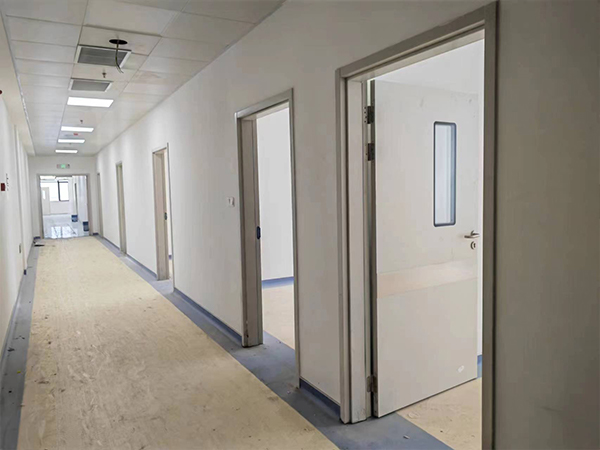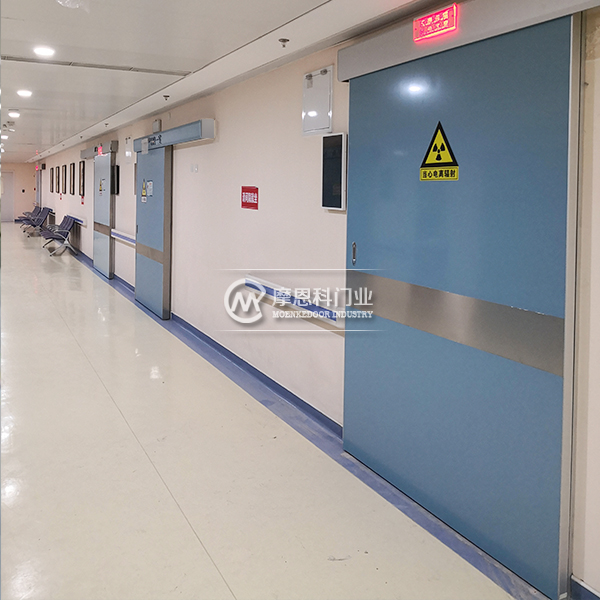In medical facilities, manufacturers of medical automatic doors play a crucial role. They not only provide safe and reliable access for medical personnel and patients, but also have multiple functions such as waterproofing, fireproofing, and sound insulation. This article will introduce the types, characteristics, installation and maintenance methods of medical doors, as well as their importance in medical institutions.

Types of medical doors
According to different usage scenarios, medical doors can be divided into hospital doors, emergency doors, observation room doors, and other types. The hospital door is mainly used for communication between various departments within the hospital, requiring high antibacterial performance and safety; The emergency door needs to have the function of quick opening and closing, in order to quickly treat patients in emergency situations; The observation room door needs to have sound insulation and privacy protection functions to protect the privacy of patients and their families.
Characteristics of medical doors
Medical doors have the following characteristics:
1. Waterproof: Medical doors have good waterproof performance, which can effectively prevent water infiltration, keep the indoor dry, and avoid bacterial growth.
2. Breathability: Medical doors have breathable properties, which help maintain indoor air circulation and improve the comfort of patients and medical personnel.
3. Safety: The medical door is made of high-strength materials, which have high impact resistance and anti-theft performance, ensuring the safety of medical facilities.
4. Antibacterial properties: The surface of medical doors is treated with antibacterial materials, which can effectively control bacterial growth and protect the health of patients and medical personnel.
5. Sound insulation: Medical doors have good sound insulation performance, which can reduce noise interference and provide a quiet treatment and rest environment for medical personnel and patients.
Installation of medical doors
When installing medical doors, the following steps should be followed:
1. Door frame installation: Determine the position and size of the door frame according to the construction drawings and fix it. Pay attention to ensuring the levelness and verticality of the door frame.
2. Door leaf installation: Connect the door leaf to the door frame to ensure that the door opens and closes flexibly without any jamming. At the same time, adjust the hinge position to ensure the balance and stability of the door.
3. Installation of hinges: According to the construction drawings, select the appropriate position and angle to install hinges, ensuring the stability and durability of the door.
4. Lock installation: Select the appropriate lock type and specifications as needed, and install according to the instructions. Pay attention to the position and angle of the lock to be reasonable and convenient for medical personnel and patients to use.
5. Quality assurance: During the installation process, attention should be paid to quality assurance to ensure that the construction of each link meets the requirements of the specifications. At the same time, necessary testing and debugging should be carried out to ensure the normal operation of various functions of the medical door.
Maintenance of medical doors

In order to extend the service life of medical doors and maintain good performance, it is necessary to regularly maintain them. The maintenance method is as follows:
1. Avoid prolonged opening or closing: Prolonged opening or closing can cause wear and aging of the hardware components of medical doors, affecting their service life. Therefore, attention should be paid to timely opening and closing during use to avoid unnecessary wear and tear.
2. Regular oiling and maintenance: Regularly oiling and maintaining the hardware of medical doors can prevent rust and corrosion, and keep them shiny as new. At the same time, it is necessary to avoid using lubricating oil containing silicone resin components to avoid damaging the waterproof performance of medical doors.
3. Cleaning and maintenance: Regularly clean and maintain the surface of medical doors, remove dirt and dust, and keep them clean and hygienic. At the same time, it is necessary to avoid using cleaning agents containing acidic or alkaline components to avoid damaging the surface coating and waterproof performance of medical doors.
4. Regular inspection: Regularly check whether the hardware, locks, hinges, and other components of the medical door are loose or damaged, and tighten or replace them in a timely manner. At the same time, it is necessary to check whether the sealing performance of the door is good and promptly deal with any problems found.













